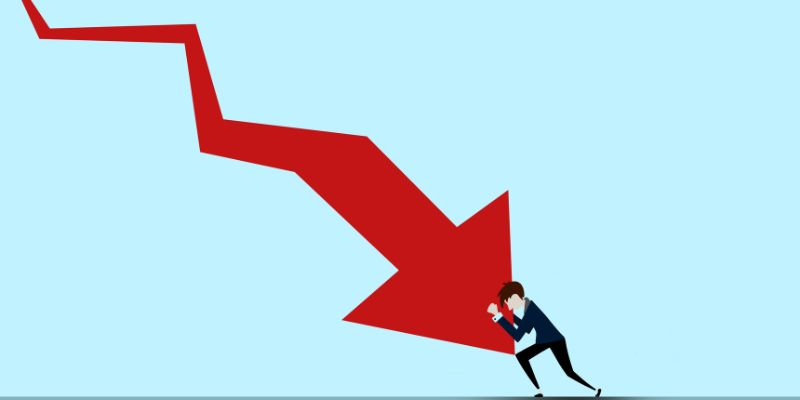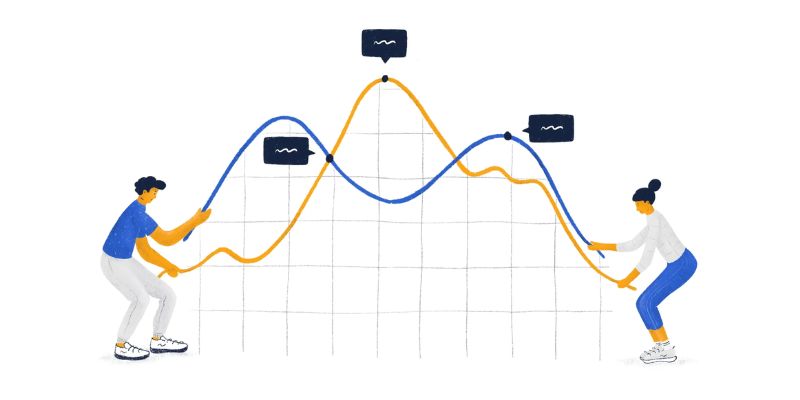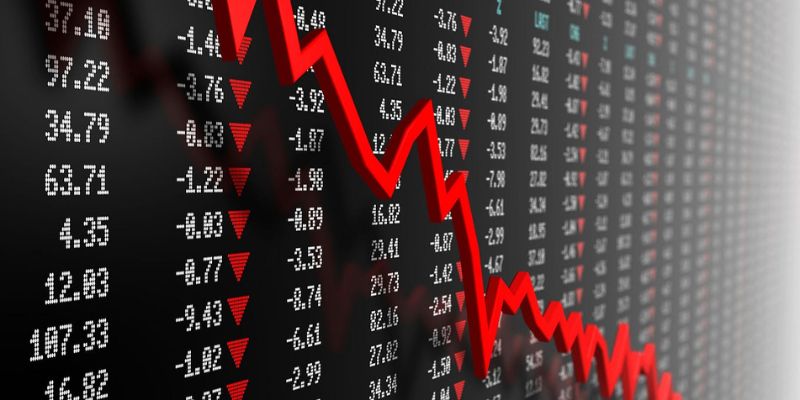Are you seeing the signs of a global recession? It’s not just a gut feeling; economic shifts don’t happen overnight—they build up, like storm clouds on the horizon. You’ve seen the news, felt the pinch at the grocery store, and heard the murmur at work about budgets tightening. But what really flags a global slowdown? This is your go-to guide for navigating the financial tempest ahead. We’ll dive deep into economic downturn indicators and market trends. Plus, we’ll decode the data that signals if tough times are truly brewing. Get ready to spot the early warnings and know what moves to make. Stay ahead, stay informed.
Identifying the Onset of a Global Recession
Analyzing Economic Downturn Indicators
Can we spot a global recession before it hits? Yes, we often can. Key signs like job losses and less making of goods show up. These signs help us prepare for tough times. Unemployment levels rise during a recession. More people say they have no jobs. Also, companies welcome fewer orders. They make less because people and other businesses spend less.
But it’s not just about fewer jobs and less making stuff. Things cost more too. This is called inflation. When prices jump up, folks struggle to buy what they need. Then they buy less. This means even less making and selling of goods. This loop can hurt economies a lot. It’s like a snowball rolling downhill. It gets bigger and faster as it goes.
There are more signs to watch for that warn us of a recession. One big warning sign is when the costs of houses stop climbing. When fewer people can or want to buy homes, it’s often a hint. It means the economy might be starting to slow down. Big buying decisions, like getting a house, take a pause.
Examining Global Market Trends and Anomalies
Now let’s chat about the wider world. Our world is all connected. What happens in one country can affect another. So, we look at global market trends. These trends show us the health of trade all over the world. When countries trade less with each other, it’s a red flag. It might mean a big recession is on its way.
Stock markets are like the world’s mood rings. They change color with the news and how people feel. A stock market crash is a loud alarm bell. It says something’s not right. People sell their shares fast. They are scared to lose their money. This panic can spread. Before you know it, it’s everywhere.
We use special tools to guess what might happen next. One tool is the purchasing managers’ index. It shows if businesses are busy or not. When this index goes down, it means business is slow. And when business is slow, we all must be sharp. We need to think and act careful-like to keep safe.
On the lookout for trouble, we must also heed bond yields. Bond yields flipping around can hint that trouble stirs. What’s normal flips upside down. Safe bets turn risky, and risky bets seem safe. These odd patterns often come before a recession. They tell folks who lend money to be careful.
In short, global slowdowns don’t just pop up. They send us warning signals if we know where to look. On the ground, if folks start losing jobs and goods pile up, pay attention. Across the sea, if markets crash and trade slows down, be alert. Both near and far, clues show a recession might be coming. Let’s keep our eyes open and plans ready. That way, we can weather any storm.

Interpreting Market and Economic Data for Recession Signals
Scrutinizing GDP Contraction and Inflation Dynamics
GDP shrinking is a big red flag. When a country makes less stuff, its GDP goes down. This can mean a recession is coming. It’s like when your weekly allowance drops; you know you’re about to have fewer fun activities.
Inflation rising too fast is also scary. It makes things cost more. Your dollar buys less. So, you’re not jumping for joy to buy stuff. And when lots of people stop buying things, businesses can suffer. Think of a time when candy prices went up at the store and you started to buy less. That’s your own little taste of inflation’s impact.
Understanding Unemployment and Housing Market Trends
Now, let’s talk jobs. When more people start to lose their jobs, the unemployment rate goes up. If your parents or friends’ parents are suddenly out of work, it’s a sign times are tough. When lots of families face this, the whole country feels it.
The housing market also tells us a lot. When fewer people buy houses, or houses start to cost less, it can mean trouble. Remember playing musical chairs? It’s like when the music stops and some people can’t find a chair. Before this happens, everyone is trying to sell their house before prices drop.
Looking at all these things – GDP, inflation, jobs, and houses – helps us figure out if a big money trouble moment is coming. It’s like putting together a weather forecast, but for money.

The Business and Consumer Perspective on Recession Onset
Observing Changes in Consumer Spending and Corporate Profits
When folks spend less, a recession might be close. This is a big sign. Yes, less spending by people leads to lower company earnings. We see this when times are tough. Sales drop when people worry about money. They buy only what they need. Firms then earn less. This can start a downturn. Fewer sales mean companies cut costs. They might even let workers go. This can make things worse. People without jobs spend less. This is how a downturn can start to bite.
Businesses react to this. They slow their spending too. They may delay buying new equipment. They stop hiring new people. These actions are signs of fear about the future. When profits fall, stocks often do too. This can hit everyone’s savings. It can shake our confidence in the economy. If enough firms start to struggle, the whole market feels it. This can show up before official stats confirm a downturn.
Assessing the Business Cycle and Industrial Manufacturing Health
Now, let’s talk about factories. The health of making stuff shows how an economy is doing. A measure of this is the purchasing managers’ index. It shows if the industry is healthy or not. If this number drops, it can mean trouble. It means orders for things to make are going down. This can be ahead of a downturn. It’s a warning to watch out. A low number can mean factories might slow down. They may produce less. This can lead to job cuts. Less work in factories can mean less money for folks to spend.
We also look at the business cycle. This is like the economy’s heartbeat. It has good times and bad times. In a bad phase, we see signs of a coming recession. One sign is when stocks crash. This can scare folks and firms alike. They may pull back on spending and investing. This keeps the bad times going.
Next is trade between countries. It often slows before a recession. Orders for things cross borders less. Firms make and sell less to other countries. This is another early sign things are not good.
So when you see folks and firms holding onto their cash, be alert. This can mean a downturn is brewing. Watch for these signs in the news. They can give us a heads-up that tough times are ahead.
Understanding these patterns is key. It helps us prepare for what may come. We can tighten our belts and be ready. Knowledge is power, especially when the economy seems shaky.

Policy Responses and Financial Indicators Ahead of Economic Slumps
Evaluating Interest Rate Movements and Bond Yield Patterns
Interest rates and bond yields speak volumes. Think of them as the economy’s heartbeat, indicating financial health or illness. When interest rates rise, borrowing money gets costlier. People and businesses spend less. High rates can warn us: a recession might be on the way.
What do we see when we look at bond yields? Normally, long-term bonds pay more than short-term ones. But sometimes, this flips—a sign called bond yield inversion. It sounds tricky, but it’s simple: investors fear the future. They want long-term safety despite lower pay. This flip often comes before a downturn.
Interest rates don’t climb for no reason, though. Central banks, like the Federal Reserve in the U.S., adjust these rates. They use them like medicine to either give the economy a boost or cool it down if it’s too hot. A quick change in these rates can be a reaction to some trouble brewing in the economic kitchen.
Bond yields need a close watch, too. Inversions have happened before every U.S. recession in the last 50 years. So when this pattern emerges, it’s like a blinking red light to economists and investors, saying, “Careful, the road ahead might get bumpy.”
Monitoring Fiscal Policies and Central Bank Actions
Fiscal and monetary policies are two sides of the same coin, keeping the economy stable. Fiscal policies involve government spending and taxes. When a government spends more or cuts taxes, it tries to make people spend more money to liven up the economy. It’s like throwing logs on a fire to keep it roaring.
Central banks control the cash flow and its cost—interest rates and such. They’re the barkeepers of the economy’s most important liquid: money. When they sense trouble, they can pour more money into the system or make it costly to encourage saving over spending. Their actions can tip us off about what’s to come.
One action we keep an eye on is “quantitative easing” or QE. It’s where central banks create money to buy assets. This can be golden in hard times, making cash more available. But if they stop or reverse QE, they might see rough water ahead and are pulling in the sails.
Another action is watching credit conditions. When banks tighten the rules on who can borrow money, it’s often because they’re worried about being repaid. It’s a big hint that the banks smell something fishy in the economy.
To predict a global recession, we piece together clues like detectives. We look at rising interest rates, bond yield inversions, and central bank moves. We scrutinize every step governments and central banks take. These moves can be early warnings, so staying alert helps us brace for what’s next.
Notice that these policies are tools in the hands of powerful economic doctors. They try to prevent or cure recessions with them. Their actions ripple across the globe. What they decide influences jobs, businesses, and your wallet. It’s a complex machine, but knowing the basics helps us understand and prepare. And that’s crucial, because when a recession hits, it can affect all of us, everywhere.
We just dove deep into spotting signs of a looming recession. We looked at economic slumps, scanning for things like dropping sales and odd market moves. Then we checked out key numbers like GDP and job rates, plus how homes are selling. We saw how folks spend their cash and how companies are doing to get the full picture. Finally, we eyed up what big money moves and rules mean for our future cash.
Here’s the deal: recessions scare us, but knowledge is power. Watching these clues helps us prep for tough times. We can’t stop recessions, but we can get ready. Smart moves now mean less stress later. Keep your eyes open, and stay money-wise!
Q&A :
What are the most evident signs of a global recession?
Understanding the indicators of a global recession is crucial for economic planning and stability. Signs often include a significant decline in economic activity across multiple economies, widespread unemployment, falling stock markets, and decreased consumer spending. International trade and investment also tend to take a hit during these periods, and there’s often a drop in confidence among consumers and businesses alike.
How can one predict if a global recession is imminent?
Economists and analysts use a variety of leading indicators to forecast potential recessions. These indicators may include trends in global gross domestic product (GDP) growth rates, yield curve inversions (where short-term debt instruments have higher yields than long-term ones), manufacturing activity, as well as indices that measure business and consumer sentiments. Additionally, global events like widespread political instability or pandemics can also precipitate a recession.
What impact does a global recession have on the average consumer?
The ripple effects of a global recession often lead to a higher cost of living, job insecurity, or unemployment for the average consumer. As businesses struggle or fail, many people may find their wages stagnating or decreasing, while others may lose their jobs entirely. Consumers tend to tighten their budgets, which results in a reduction in discretionary spending and can further deepen the economic downturn.
Is there a difference between a recession and a global recession?
While a traditional recession is defined by a decline in economic activity within a single country or region, a global recession extends across many countries and regions, impacting international markets, trade, and finance. The interconnectivity of global economies means that a downturn in one major economy can have cascading effects worldwide, making the implications of a global recession much more far-reaching than a localized recession.
How do governments and central banks respond to signs of a global recession?
In response to signs of a global recession, governments and central banks may implement a range of monetary and fiscal policy measures. These can include cutting interest rates, increasing government spending, and providing financial aid to businesses and households. Central banks may also engage in quantitative easing to stimulate economic activity. Policymakers aim to provide stability, stimulate demand, and restore confidence in the economy during these challenging times.

